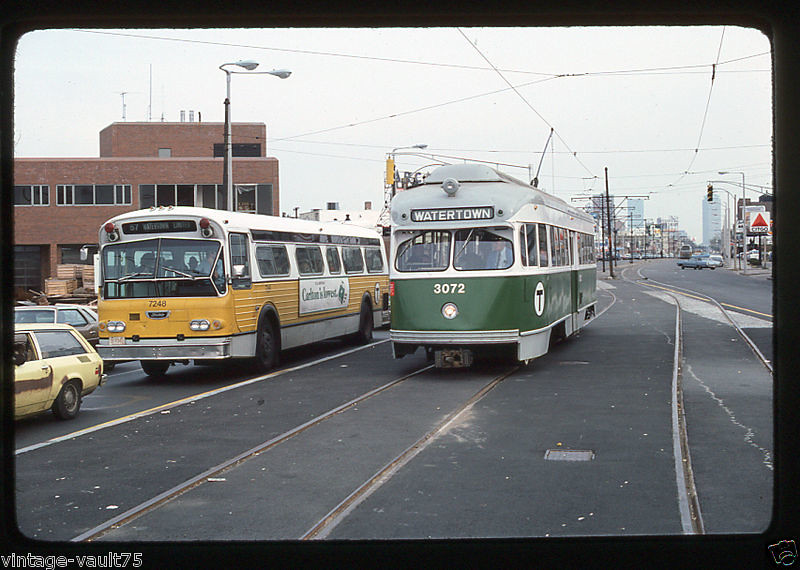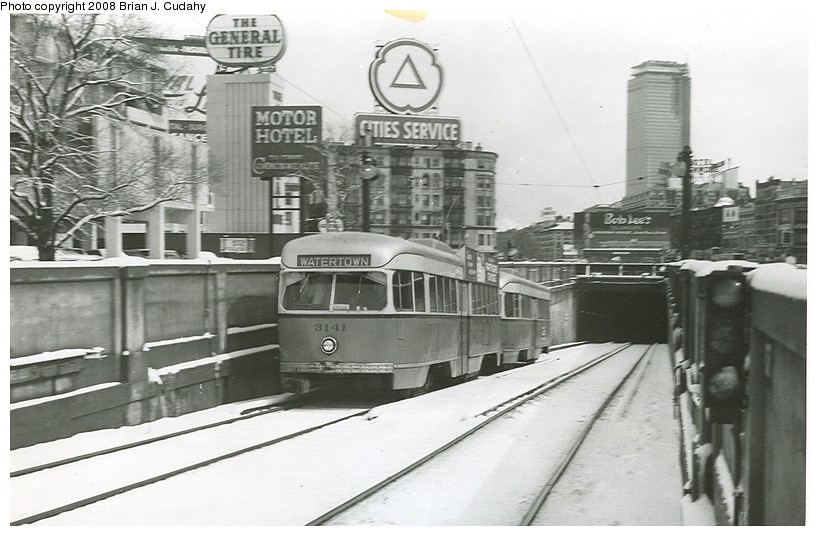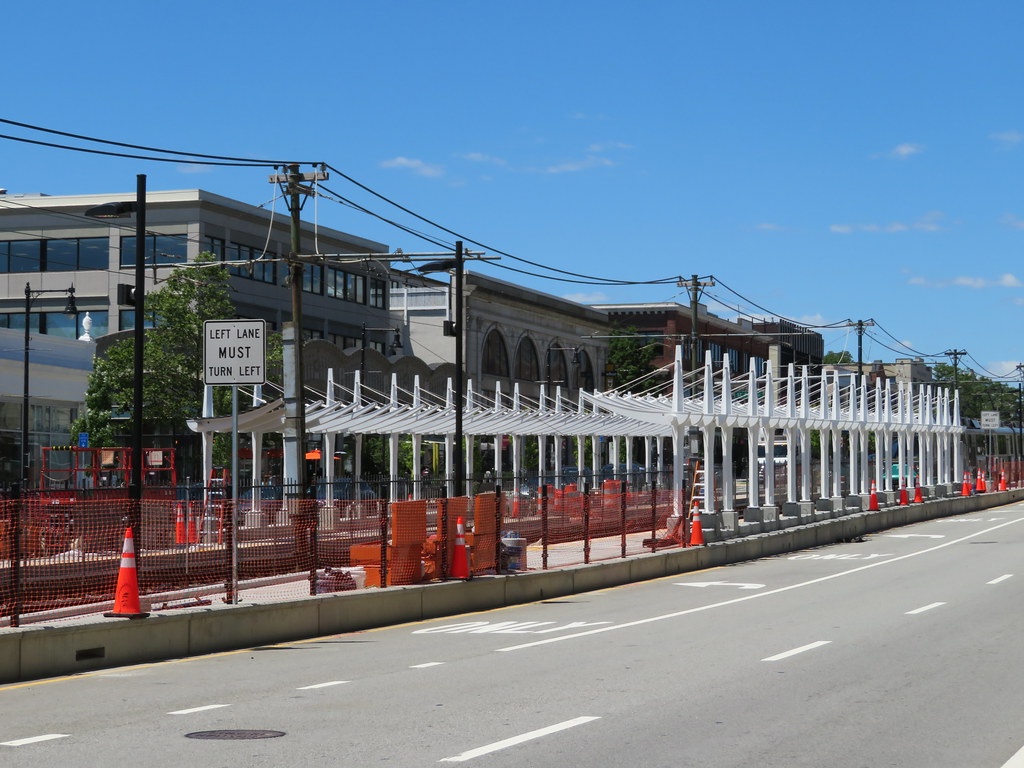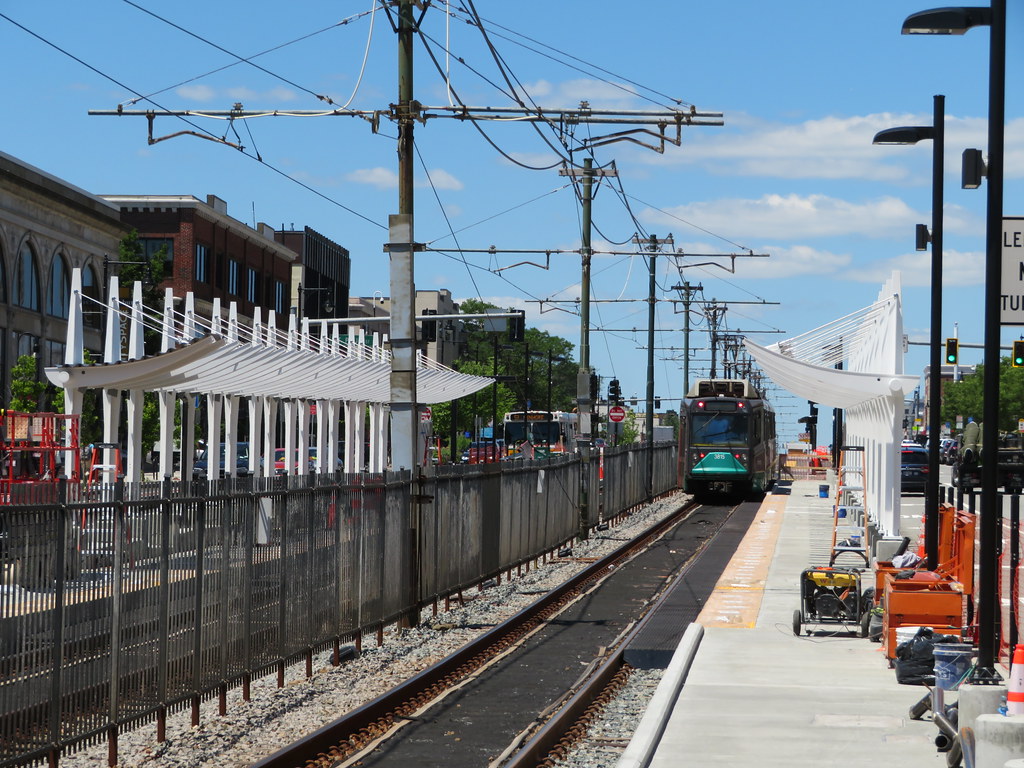winstonoboogie
Active Member
- Joined
- Dec 8, 2012
- Messages
- 541
- Reaction score
- 1
I think a lot of our short stop spacing on Green Line and buses come from the perception that people in Boston really don't want to ride transit and so they need to be offered very convenient access. .
I have a 1905 listing of stops for all streets served by Boston Elevated streetcar lines. It was a document given to streetcar conductors and operators. Just for a historical comparison, here is the 1905 list of stops on the segments that would survive to become the surface part of today's B, C, and E lines
C line from Cleveland Circle to St. Mary:
Reservoir Carhouse
Strathmore
Englewood and Clinton
Killsyth
Dean and Corey
The Beaconsfield
Tappen and Williston
Winthrop
Washington & University
Jordan’s Steps and Westborn
Hotel Majestic
Fairbanks and Lancaster
Hotels Bonair and Kenmoir
Marion
Summit
Park & Winchester
Centre and Webster
Whitney Hall
Coolidge Corner
Pleasant
Charles
St. Paul
Richmond Court
Kent and Powell
Hawes
Carlton
St. Mary
B Line from Boston College to Blandford:
Lake St. (Boston College)
St. John’s Seminary
Evergreen Cemetery
Foster
South
Chestnut Hill Ave.
Strathmore
Chiswick
Wallingford and Kinross
Sutherland
Cummings
Washington
Summit
Warren
Allston
Pole Station (opposite # 1287)
Harvard Ave.
Linden
Thorndike
Chester
Commonwealth and Brighton Ave.
Naples
Babcock
Pleasant
St Paul
Pole Station (197-47)
Essex (Cottage Farm Station)
Chillmark
St. Mary and Ashby
Lawton
Granby
Sherborn
E Line from Heath St. to Northeastern:
Heath
Pole Station 129-59-Page Estate
Parker Hill Ave.
Kempton
Wait
Calumet
Tremont and Francis
Hotel Helvetia
Smith and Wigglesworth
Conant and Worthington
Longwood Ave.
Ward
Vancouver
Ruggles
Skating Rink
Greenleaf and Parker
Bryant
American League Grounds
(anything marked "pole station" meant it was mid-block and was identified by the nearest line pole number vs. a street or landmark name)
So the C Line had 27 stops vs 13 today, the B line 32 stops vs. 18 today, and the E line 18 stops vs. 9 today. From a 108 year historical prospective, they have made great progress in stop consolidation!




 IMG_9191
IMG_9191 IMG_9193
IMG_9193 IMG_9199
IMG_9199 IMG_9202
IMG_9202 IMG_9203
IMG_9203 IMG_9205
IMG_9205